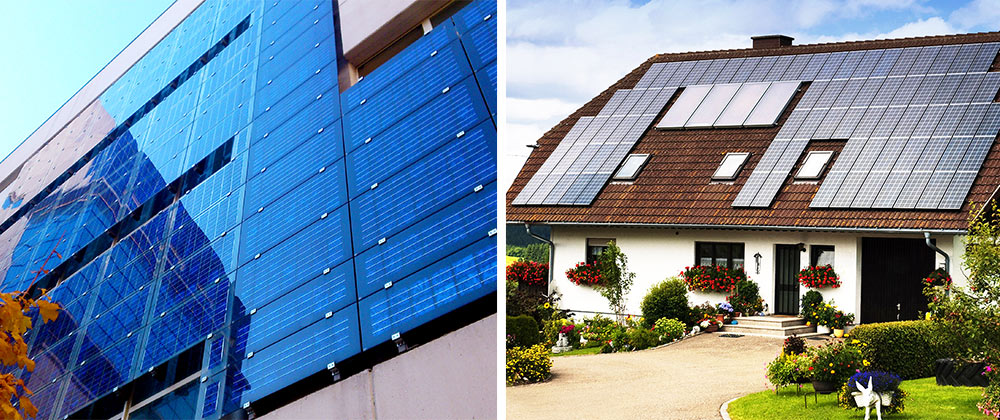Exercitation ullamco laboris nis aliquip sed conseqrure dolorn repreh deris ptate velit ecepteur duis.
- Building A2 ,Dubai South Business Center, PO Box 118053
- +971 56 5013634, +971 50 899 8590
Solar PV Solutions for Buildings

Our Solutions
Solar PV Solutions for Buildings
Solar BIPV Systems
BIPV (Building-integrated photovoltaic) are dual-purpose: they serve as both the outer layer of a structure and generate electricity for on-site use or export to the grid. BIPV systems can provide savings in materials and electricity costs, reduce pollution, and add to the architectural appeal of a building.
BIPV serves as energy savers by providing enough daylight and illumination into the buildings indoors. The PV application in buildings is gaining much popularity due to the lack of enough ground area. The actual dead load of the building, i.e., walls, rooftops made with concrete are reduced or replaced by a flexible transparent or semi-transparent PV module technologies. The use of PV technology to replace building construction materials reduces the cost of construction.
BIPV Windows:
BIPV windows integrate solar cells within window glazing and do not only retain the functionality of conventional windows but also provide other benefits such as electricity generation and thermal insulation. BIPV windows can be categorised by single glazed BIPV windows, double glazed BIPV windows (with/without ventilation) and vacuum BIPV windows depending on the configurations of the glazing.
Solar BAPV Systems
In BAPV, the PV modules are directly attached to the buildings using additional mounting structure and moving rails. Here, the PV modules do not have any direct effect on the building structures and the way they function. The PV modules are installed at certain tilt angles either on roof or façade (BAPV-wall, BAPV sloped roof) based on local weather conditions. BAPV can also be installed on the horizontal roof and vertical wall.
BIPV or BAPV systems generate electricity which is relatively free from greenhouse gas emission during the operational phase with no ground or land space requirements.

